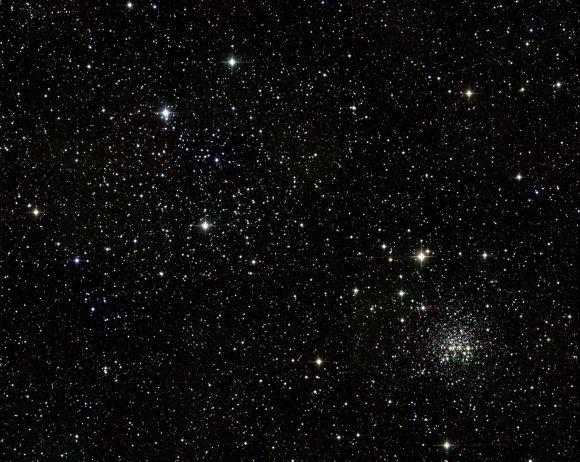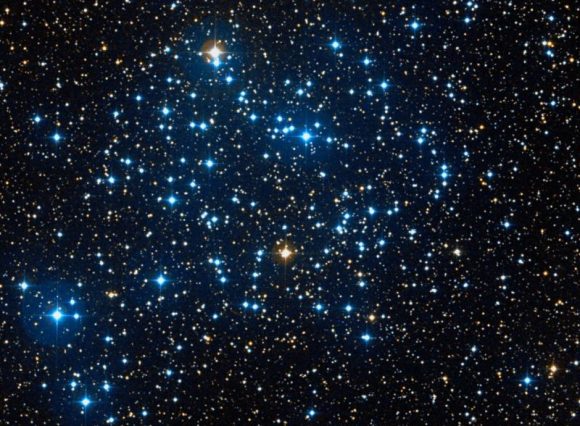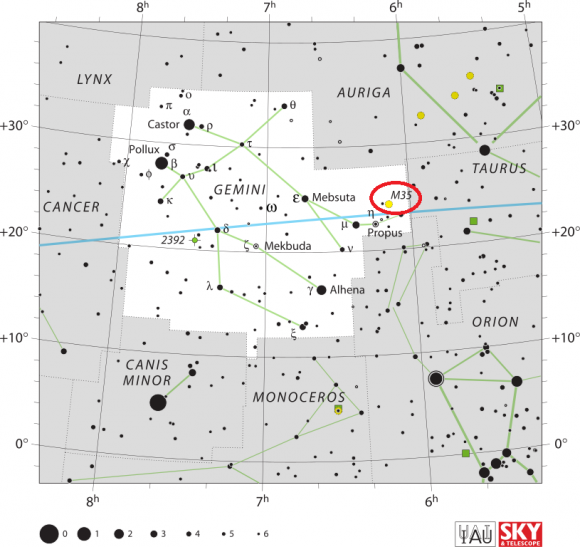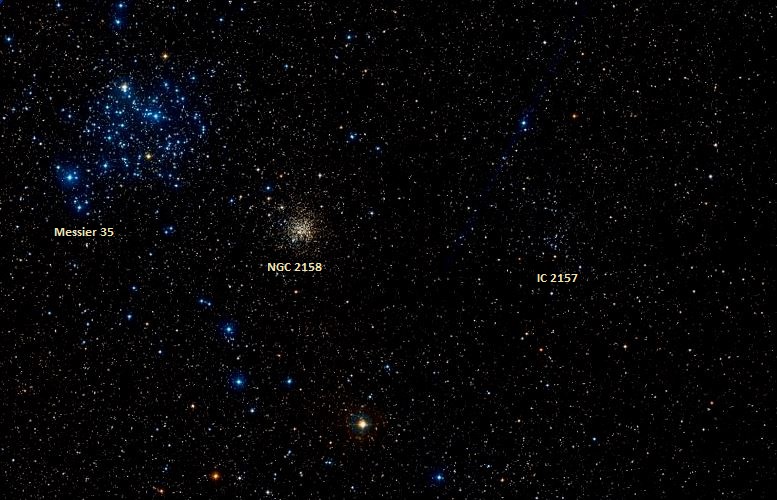Welcome back to Messier Monday! In our ongoing tribute to the great Tammy Plotner, we take a look at the open star cluster known as Messier 35. Enjoy!
During the 18th century, famed French astronomer Charles Messier noted the presence of several “nebulous objects” in the night sky. Having originally mistaken them for comets, he began compiling a list of them so that others would not make the same mistake he did. In time, this list (known as the Messier Catalog) would come to include 100 of the most fabulous objects in the night sky.
One of these objects is known as Messier 35, a large open star cluster located in the northern constellation Gemini. M35 is the only Messier Object located in Gemini, and lies near the border with the adjacent constellations of Taurus, Auriga and Orion. It consists several hundred stars that are scattered over an area that is about the same size as a Full Moon.
What You Are Looking At:
Messier 35 is 2,800 light years away from Earth and is relatively young as star clusters go, having formed only about 100 million years ago. The cluster occupies a region of space that is roughly 24 light years in diameter, and an area of 28 arc minutes on the sky – which is roughly equal to the size of the full Moon.

M35 has a central mass that spans 11.4 light years (3.75 parsecs), with an estimated mass of 1600 to 3200 solar masses. While most of the molecule cloud from which it formed has been blown away, some of the material resides in the immediate vicinity of its stars. This can be seen in the way that light from its particularly bright blue stars is scattered to create a diffuse glow.
These are the hottest main sequence stars in the cluster, which correspond to a spectral classification of B3. M35 also contains more evolved stars, including several orange and yellow giants, which have longer lifespans than the more-massive blue stars (only a few tense of millions of years).
As a result, these stars will likely die out in the near future while the smaller stars continue to evolve, drastically affecting the cluster’s luminosity and appearance. In short, it will become redder and dimmer over time.
History of Observation:
This wonderful star cluster was discovered by Philippe Loys de Chéseaux 1745-46 and recovered again by John Bevis before 1750. However, we know and love it best as Messier Object 35, when it was penned into being by Charles Messier. As he wrote of the cluster upon observing it for the first time:
“In the night of August 30 to 31, 1764, I have observed a cluster of very small stars, near the left foot of Castor, little distant from the stars Mu and Eta of that constellation [Gemini]. When examining this star cluster with an ordinary refractor of 3 feet, it seemed to contain nebulosity; but having examined it with a good Gregorian telescope which magnified 104 times, I have noticed that it is nothing but a cluster of small stars, among which there are some which are of more light; its extension may be 20 minutes of arc. I have compared the middle of this cluster with the star Eta of Castor; its right ascension has been concluded at 88d 40′ 9″, and its declination at 24d 33′ 30″ north.”

How long would it be before the companion cluster was observed as well? My guess is Sir William Herschel’s time. Although Herschel would not publish his notes on Messier objects, they do state while observing M35 that “There is no central condensation to denote a globular form.”
And what of Admiral Smyth? He observed the cluster in September of 1836, though he appeared to have missed its companion cluster. As he recorded of M35 at the time:
“A cluster, near Castor’s right foot, in the Galaxy, discovered and registered by Messier in 1764. It presents a gorgeous field of stars from the 9th to the 16th magnitudes, but with the center of mass less rich than the rest. From the small stars being inclined to form curves of three, four, and often with a large [bright] one at the root of the curve, it somewhat reminds one of the bursting of a sky-rocket.”
A nice description, but if you see the companion cluster, you’ll know it!
Locating Messier 35:
Locating M35 in binoculars is fairly easy once you recognize the constellation of Gemini. You’ll find it just a little more than the average field of view north of Eta – the center most of the three “foot” stars on the northernmost twin. In the finderscope of a telescope, begin with Eta and starhop north until you spot a faint fuzzy in the finderscope.

Because Messier 35 is large, you’ll need low magnification to appreciate the size of this cluster in a telecope. It stands up well to moonlight and light polluted skies – as well as less than perfect sky conditions, but you will need around a 10″ or larger telescope to really begin to notice its companion cluster, NGC 2158. In smaller telescopes with good conditions, it will appear as a faint nebulous patch.
And as always, here are the quick facts on M35 to get you started!
Object Name: Messier 35
Alternative Designations: M35, NGC 2168
Object Type: Galactic Open Star Cluster
Constellation: Gemini
Right Ascension: 06 : 08.9 (h:m)
Declination: +24 : 20 (deg:m)
Distance: 2.8 (kly)
Visual Brightness: 5.3 (mag)
Apparent Dimension: 28.0 (arc min)
We have written many interesting articles about Messier Objects here at Universe Today. Here’s Tammy Plotner’s Introduction to the Messier Objects, , M1 – The Crab Nebula, M8 – The Lagoon Nebula, and David Dickison’s articles on the 2013 and 2014 Messier Marathons.
Be to sure to check out our complete Messier Catalog. And for more information, check out the SEDS Messier Database.
Sources:

